Steampunk Spotlight: Cherie Priest’s Ganymede
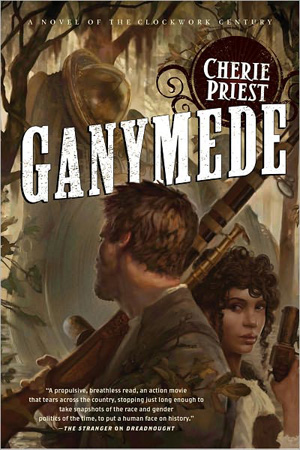 Ganymede (Amazon | B&N)
Ganymede (Amazon | B&N)
Cherie Priest
Tor (350 pp., $14.99, October 2011)
Reviewed by Jackson Kuhl
On the eve of the fall and subsequent occupation of New Orleans by the Union in 1862, lawyer and amateur engineer Horace L. Hunley, along with his two investment partners, scuttled their submarine Pioneer in a canal to prevent its seizure by the Federals. They may, or may not, have likewise scuttled a second submarine near Lake Pontchartrain; there are no records for this sub and its design departs from Hunley’s other efforts. The trio fled to Mobile, Alabama, to build another sub, which sank, and yet another, the H.L. Hunley, which drowned its namesake, then successfully torpedoed the Union blockade ship Housatonic before itself swamping in Charleston Harbor during its return.
In the alternate history of Cherie Priest’s latest Clockwork Century novel, Hunley and his partners constructed a fifth submersible, the titular Ganymede, which sank near New Orleans. The Civil War has stretched into the late nineteenth-century and the city is occupied by the Confederate-allied Republic of Texas. Now a team of pro-Union guerrillas has recovered Ganymede and, hopeful the machine can end the war in the Union’s favor, intends to transport it down the Mississippi River — past the Texians searching for it — to a waiting U.S. battleship in the Gulf. All of this is orchestrated by freedom fighter Josephine Early, a black whorehouse madam and Union agent. With no one experienced enough to pilot the sub, Early hires airship captain Andan Cly (who also happens to be her ex-lover, natch) to “fly” Ganymede under the river and the Texians’ noses to the rendezvous.
Priest has cooked together espionage, a rich setting, intriguing characters, and a plot that could have been stolen from Alistair Maclean. It’s a great gumbo — providing you ignore there’s not an ounce of suspense to be tasted. Spoilers ahoy!
 If you plan to see Prometheus this weekend, know that you are in for an endless buffet of visual astonishment, especially if you spring to see it in IMAX 3D. Ridley Scott belongs to the breed of filmmaker who can justify the use of the 3D gimmick. He poured everything at his disposal to make his new science-fiction film worth the extra dollars, euros, pound notes needed to watch it in an immersive environment. Prometheus is visual and aural splendor for the cinema.
If you plan to see Prometheus this weekend, know that you are in for an endless buffet of visual astonishment, especially if you spring to see it in IMAX 3D. Ridley Scott belongs to the breed of filmmaker who can justify the use of the 3D gimmick. He poured everything at his disposal to make his new science-fiction film worth the extra dollars, euros, pound notes needed to watch it in an immersive environment. Prometheus is visual and aural splendor for the cinema.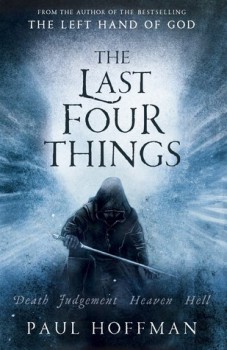 The Last Four Things
The Last Four Things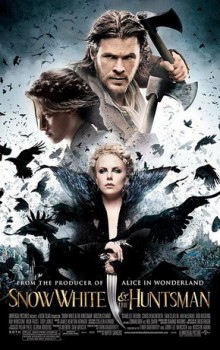 Summer movies, like boxes of Crackerjacks (does anyone still eat those? I never see them for sale any more), come packed with surprises. And, like Crackerjacks toys, often they are lame surprises. Let-downs. Occasionally — and it usually happens only once per summer — the toy you dig out of the same-old same-old caramel and peanut glop is a Hot Wheels car with flame details and killer sci-fi spoilers that somebody in the Crackerjack plant accidentally dropped into the box while leaving hastily for a smoke break.
Summer movies, like boxes of Crackerjacks (does anyone still eat those? I never see them for sale any more), come packed with surprises. And, like Crackerjacks toys, often they are lame surprises. Let-downs. Occasionally — and it usually happens only once per summer — the toy you dig out of the same-old same-old caramel and peanut glop is a Hot Wheels car with flame details and killer sci-fi spoilers that somebody in the Crackerjack plant accidentally dropped into the box while leaving hastily for a smoke break.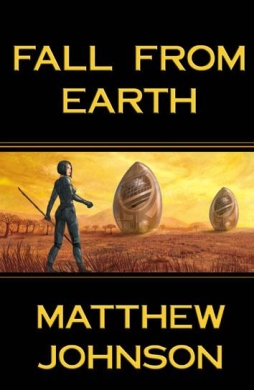 Fall From Earth
Fall From Earth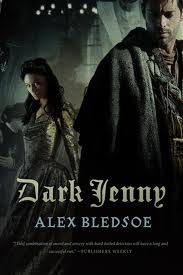 Dark Jenny
Dark Jenny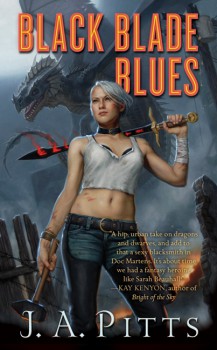 Black Blade Blues
Black Blade Blues The Immorality Virus
The Immorality Virus Before getting into Men in Black Part the Third, I must retract a promise made in an earlier post, where I
Before getting into Men in Black Part the Third, I must retract a promise made in an earlier post, where I  Triptych
Triptych